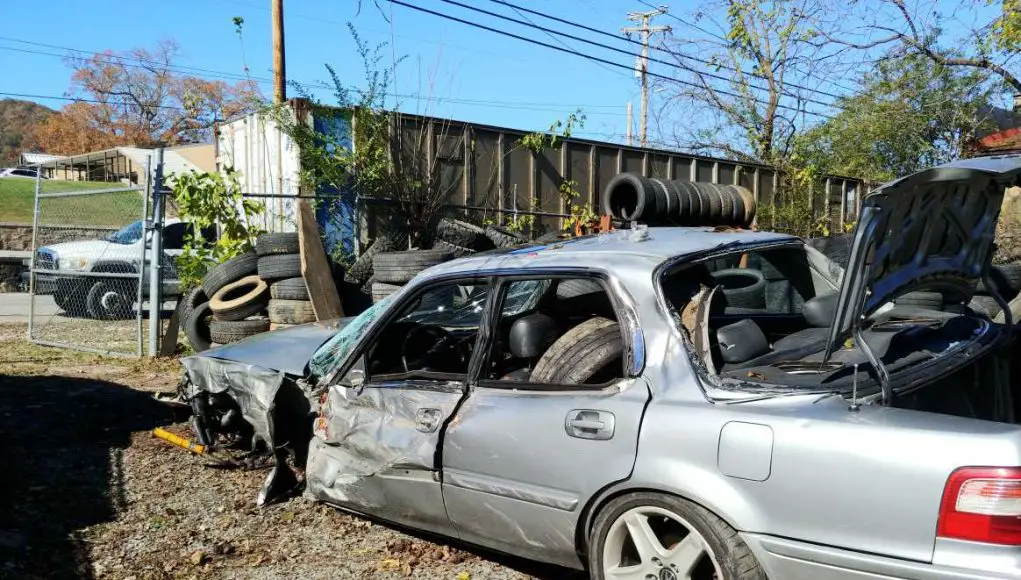This Acura Vigor owner survived a 200 foot plunge off the Hellbender 28 partly thanks to solid Honda engineering done decades ago.
VTEC.net member Hondatalover knew the ins and outs of his Acura Vigor, including its reputation for safety despite using decades old technology. Hondatalover, unfortunately, found out firsthand just how safe his Acura Vigor was when, during a spirited drive on the Hellbender 28 (near the Tail of the Dragon,) the rear end of his Vigor got loose sending Hondatalover 200 feet down a steep forest cliff into the nearby river.
Hondatalover survived the horrifying ordeal without a sore bone on his body mostly because of how he crashed but partly because of the excellent Honda engineering done decades before.
Here’s a handful of videos he posted on the VTEC.net thread and here’s the link to the thread itself where Honadatalover describes in great detail how the accident went down and what he plans to do afterwards.
20+ y/o Acura Vigor plunges 200ish feet off Hellbender 28 (near TOTD) after the rear end gets loose. Owner reports no injuries, plans to salvage the engine, trans, and most of the running gear.
— Paulo nonVTEC Acoba (@ferio_252) November 25, 2019
Lots of words about the experience from the owner here: https://t.co/iOwJqcrl50 pic.twitter.com/yPVK34FFTk
Hellbender 28 is one serious road for advanced drivers in North Carolina with lots of twists, turns, and elevation changes with just as notorious reputation as its more famous neighboring road, “The Tail of the Dragon.”
According to Hondatalover, his Vigor was equipped with sticky summer compound tires. With temps dropping into the 30’s and on normal roads, he was finding it difficult to keep any heat and grip in the tires.
“The rear end stepped out coming through a right hand corner after going over rougher pavement. For some reason instead of steering into the direction I needed to go and hitting the gas to pull the car out of oversteer I panicked slammed on the brakes which with the lack of ABS functioning and the compromised summer tire compound only sped the process of my car sliding off a cliff drivers door first and into a tree.
From bouncing off the the first tree and into a second tree on the passenger side my can proceed to drop about 200 feet and ‘pin ball’ its way through other trees into the river where it landed rear passenger side in the water. “
His Vigor flipped and hit trees, rolling over at least once. Despite falling several hundred feet to the river below, Hondatalover suffered no injuries, bruising, or broken bones. Although shook, he survived 100 percent.
Thanks to the way he hit the trees, his engine, transmission, and most of the running gear is all intact and he plans to salvage those parts for his next Vigor.
As mentioned, while part of his survival was the circumstance, his Acura and its engineering performed exactly as planned, keeping him safe.
When Acura introduced the third gen Vigor in 1989 in Japan and then in 1991 in the United States, this Japanese luxury sports sedan sported several key safety features including
- Radiused Front Frame Rails that absorb and redirect impact energy thanks to a longitudinal engine.
- A Perimeter Roof rail- tying together all six body pillars increasing rigidity and reduces torsional forces.
- And an engineering and safety analysis using NASTRAN computer aided design, first utilized by NASA on their spacecraft that slowly trickled down to the consumer car market. [1]
“Virtually all U.S. automakers now employ the aerospace-derived computer design technique and most employ the NASTRAN program or other NASA-developed programs in the design process. Honda R&D Computer Ltd. has been using NASTRAN for more than a decade for structural analysis of auto bodies, motorcydes and such components as tires, wheels, engine blocks, pistons, connecting rods and crankshafts. All of the Honda auto products designed in the 1980s have been analyzed by the NASTRAN program. “
The Vigor performed so well for Hondatalover that he plans to buy another one.
Talk about brand loyalty.
Acuras are known for their sportiness but Honda, in no way, skimped on safety to increase performance. Even though the safety design is closing in on thirty years old, it’s still a competent and safe chassis.




